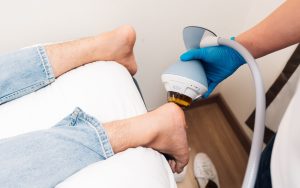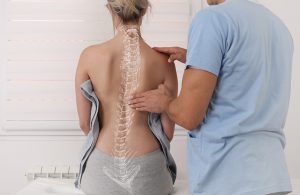Testosterone is a vital hormone predominantly produced in the testicles for men and in smaller amounts in women’s ovaries. It plays a crucial role in developing male sexual characteristics and maintaining muscle mass, bone density, and red blood cell production.
What is Testosterone?
Testosterone is classified as a steroid hormone in the androgen group. It is essential for the development of male reproductive tissues as well as promoting secondary sexual characteristics such as increased muscle and bone mass, and the growth of body hair.
Functions of Testosterone in the Body
The hormone is not only pivotal for sexual and reproductive development but also contributes to modulating libido, energy levels, and mental health. It influences fat distribution, bone density, muscle strength, and the production of red blood cells.
Indicators of Healthy Testosterone Levels
Healthy levels of testosterone are indicated by various factors including libido, mood stability, and physical vitality. Symptoms of low testosterone can include fatigue, mood swings, and a decrease in muscle mass. Regular monitoring and managing testosterone levels are crucial for long-term health and well-being.
Impact of Exercise on Testosterone Levels
Exercise plays a pivotal role in regulating hormonal health, particularly testosterone levels in the body. Engaging in regular physical activity can significantly influence the production and regulation of this crucial hormone.
- Physical activity stimulates the body’s endocrine system, enhancing the natural production of testosterone. This is particularly evident in resistance training and high-intensity workouts.
- Different types of exercises have varying impacts on testosterone levels. For instance, strength training, especially when involving large muscle groups, is known to boost testosterone more effectively than endurance exercises.
- The response of testosterone to exercise is not linear and depends on the intensity and duration of the workout. Short, intense workouts are generally more beneficial for testosterone production than prolonged, moderate activities.
Understanding these dynamics can help individuals tailor their exercise routines to optimize hormonal health and overall well-being.
Optimal Exercise Routines for Testosterone Enhancement
Strength Training and Testosterone
Strength training is pivotal in enhancing testosterone levels. Incorporating exercises like squats, deadlifts, and bench presses can significantly boost hormonal production. The key is consistency and gradually increasing the intensity to stimulate testosterone release effectively.
Cardiovascular Exercises and Hormonal Balance
While strength training is crucial, cardiovascular exercises also play a significant role in maintaining hormonal balance. Activities such as running, cycling, and swimming help improve overall health and can indirectly support testosterone levels by reducing body fat and improving metabolic health.
Combining Exercise Modalities for Maximum Benefit
To achieve the best results, a combination of strength training and cardiovascular exercises is recommended. This approach not only enhances testosterone production but also ensures a well-rounded fitness regimen. Balancing these modalities helps in achieving optimal hormonal health and physical fitness.
Diet and Nutrition: Complements to Exercise
Key Nutrients That Support Testosterone Production
A balanced diet rich in specific nutrients can significantly enhance testosterone production. Essential nutrients include zinc, vitamin D, and omega-3 fatty acids. Foods like oysters, fortified cereals, and fatty fish are excellent sources. Regular intake of these nutrients supports the hormonal health necessary for optimal testosterone levels.
Dietary Patterns for Hormonal Health
Adopting dietary patterns that promote hormonal balance is crucial. A Mediterranean diet, which emphasizes fruits, vegetables, whole grains, and healthy fats, has been shown to be beneficial. This diet not only supports testosterone levels but also improves overall health.
Interplay Between Diet, Exercise, and Testosterone
The synergy between diet and exercise is vital for maintaining healthy testosterone levels. A diet that complements an exercise regimen can enhance hormonal responses and improve exercise efficacy. For instance, consuming protein-rich foods post-workout can aid in muscle recovery and boost testosterone production.
Lifestyle Factors Affecting Testosterone Levels
Lifestyle choices play a crucial role in maintaining healthy testosterone levels. Factors such as stress, sleep quality, body weight, and substance use can significantly influence hormonal balance.
- Stress is a major disruptor of hormonal equilibrium. Chronic stress elevates cortisol levels, which in turn can suppress testosterone production. Managing stress through relaxation techniques and mindfulness can help mitigate its impact on testosterone.
- Adequate sleep is essential for optimal testosterone production. Poor sleep patterns are linked to lower testosterone levels. Adults should aim for 7-9 hours of quality sleep per night to support hormonal health.
- Body weight and fat distribution affect testosterone levels. Excess body fat, especially in the abdominal area, is associated with decreased testosterone. Maintaining a healthy weight through diet and exercise is crucial for hormonal balance.
- The consumption of alcohol and the use of smoking products can also negatively impact testosterone levels. Moderation or avoidance of these substances is recommended to maintain healthy testosterone levels.
Understanding and managing these lifestyle factors can help individuals maintain or enhance their testosterone levels, contributing to overall well-being and health.
Age-Related Changes in Testosterone and Exercise Needs
Testosterone Levels Across Different Life Stages
Testosterone levels naturally fluctuate throughout a man’s life. During adolescence and early adulthood, levels peak, providing optimal conditions for muscle growth and reproductive functions. As men age, these levels gradually decline, which can affect physical health and well-being.
Adjusting Exercise Routines with Age
As testosterone levels decline, it becomes crucial to adapt exercise routines to maintain hormonal health. Older adults may benefit from a mix of strength training and moderate cardiovascular exercises to help sustain testosterone levels and muscle mass.
Preventing Testosterone Decline in Older Adults
Preventative measures can be taken to slow the decline of testosterone as one ages. Regular physical activity, combined with a balanced diet and adequate sleep, plays a significant role in maintaining healthy testosterone levels. Strategies such as personalized men’s health treatments including testosterone therapy can also be considered to manage levels effectively.






More Stories
Shockwave for ED vs. Traditional treatments – A comprehensive comparison
Effective Ways to Manage Spinal Curvature in Adolescents
Enhance Your Culinary Experience: Pairing Cannabis Strains with Local Flavors